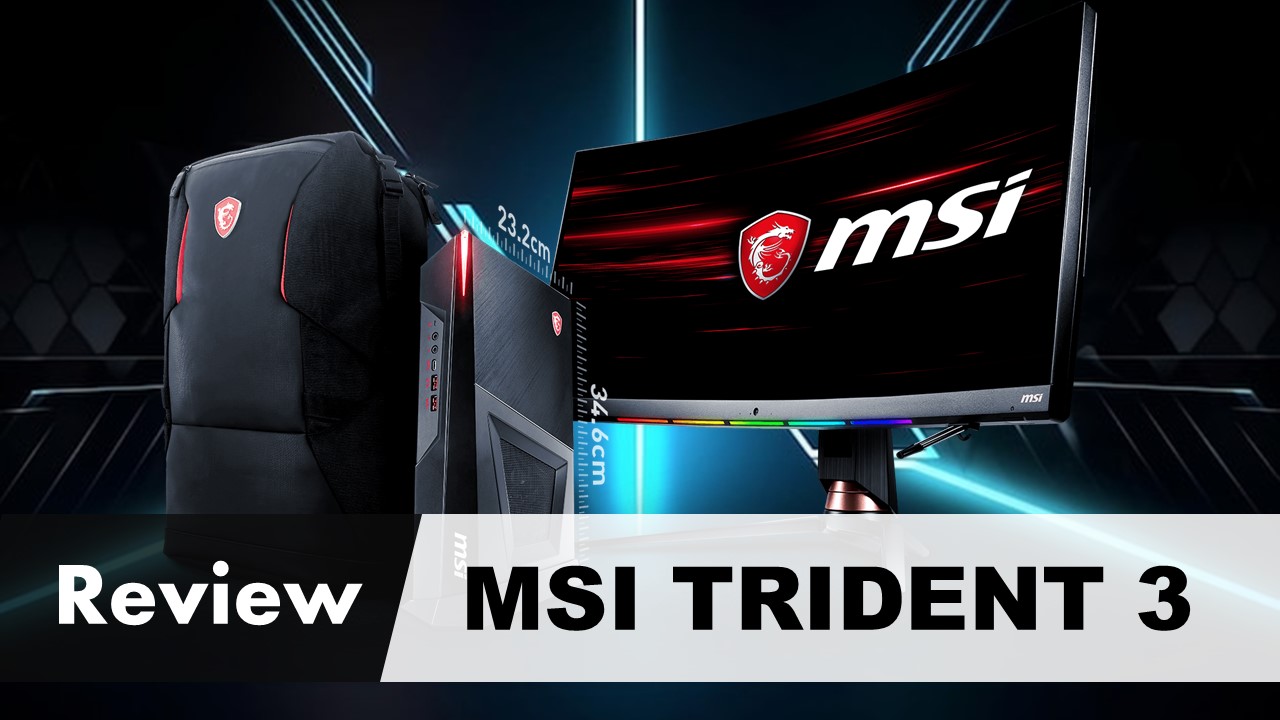Looking for a sleek, powerful gaming PC that won’t take up much space? Well, look no further than the MSI Trident 3. This compact gaming rig packs a punch with its impressive performance and stylish design. Let’s dive into a review of this little powerhouse.
For years, gaming PC makers have been on a quest to create a gaming PC as small as a console. With improvements in power and thermal efficiency from Intel, Nvidia, and AMD, some progress has been made. However, blending power and affordability in a small gaming setup remains tricky, a challenge MSI has faced before.
Now, MSI is taking another shot at this category. This time, they’ve equipped the MSI Trident 3 with a mid-range GTX 1060 with 3GB of RAM and an Intel Core i7-7700HQ with 16GB of RAM, all for just $1,300. While it’s not as budget-friendly as rival desktops, its compact size might justify the extra cost. Is the MSI Trident 3 the perfect addition to your living room? Or has MSI missed the mark once again?
Pros
- Small size
- Operates quietly and stays cool
- End user’s experience is given huge attention.
- Delivers strong gaming performance on the highest settings
Cons
- Requires an external 330W power brick
- Loaded with unnecessary software
- Unusual choice of ports
Technical Specification
|
MSI Trident3 PC |
|
| CPU | Intel Core i7-7700 |
| Memory | 2x DDR4 SO-DIMM (up to 32 GB) |
| Video Card | Custom MSI GAMING GTX 1060 6 GB |
| Audio | Realtek ALC1150 (HD Audio) |
| Networking | Intel Dual Band Wireless-AC 3168 + WGI219V by Intel |
| Storage | 1 TB 2.5″ SATA 6 Gb/s+ 256 GB SATA 6 Gb/s M.2 SSD |
| Ports | 1x USB 3.1 Gen 1 C Type 2x USB 3.1 Gen 1 A Type (with Super Charger 2) 1x USB 3.1 Gen1 A Type 4x USB2.0 1x Mic in / 1x Headphone out 1x HDMI out (VR Link) 1x HDMI out (Onboard iGPU) 1x HDMI in (interface Realistic card and front VR-Link harbor) port 3x OFC Audio jacks |
| CPU Cooler | Customized Air Cooler |
| Dimensions | 346.25 mm x 232.47 mm x 71.83 mm |
| Special Features | Windows 10 Home 64-bit
The world’s smallest VR-ready gaming PC Compact, lightweight easy to transport case Extra-compact 4.72-liter case Silent storming cooling 2 VR Link Horizontal or Vertical Audio Boost 3 Nahimic 2.5 Mystic Light RGB LED Super Charger 2 |
Unboxing
The package containing the MSI Trident 3 was bigger than I expected. Surprisingly, there were multiple boxes, offering different choices for what comes with the PC: just the MSI Trident 3 itself, a gamepad, or bundled with a keyboard and mouse. The label on the side of the box indicates the contents inside.
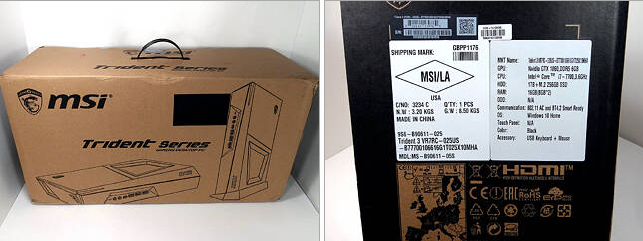
The box is sealed to guarantee that your new MSI Trident 3 PC hasn’t been tampered with since it left the factory. Cutting open those seals is always satisfying. Once the box is open, you’ll discover the separate parts neatly packed in their boxes, each securely nestled in its designated section within the protective foam.
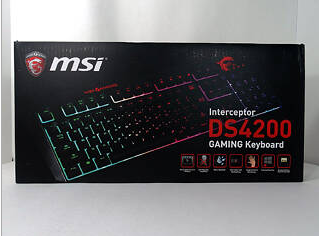
Receiving a keyboard unexpectedly was a pleasant surprise for me. The packaging itself is quite fancy, at the very least.
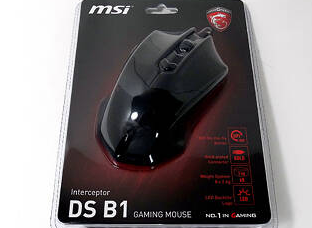
On the contrary, the mouse is packaged in a relatively inexpensive blister pack, which initially lowered my expectations. However, this type of packaging allows you to gauge how the mouse feels in your hand without needing to open the package. That’s a nice touch.
Next up is the packaging for the MSI Trident 3 PC itself. The front showcases a picture of the unit, while the back provides brief descriptions of its features. In my opinion, this is excellent packaging, both in terms of presentation and information provided.
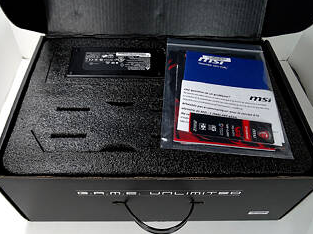
I thoroughly enjoyed unboxing the MSI Trident 3. Inside, there’s this plush foam padding, along with paper manuals neatly packed in a bag at the top. After removing the plastic bag, you’ll find the external power supply and its cables.
In addition, you’ll discover the vertical stand for the MSI Trident 3 here. Removing the top layer of foam reveals the Trident3 itself, snugly wrapped in a protective bag and surrounded by ample thick black foam.
The bag has a lovely soft velvety texture, and I noticed a newly embossed MSI GAMING logo on one side. Just perfect!
Read Also: Review of MSI RTX 4090 Suprim Liquid X: Power and Performance in Compact Form
Design of MSI Trident 3
Perhaps it’s the sleek white design or the silver base, but the MSI Trident 3 Arctic resembles the bigger, more hardcore sibling of the Nintendo Wii. But hey, no complaints here. This compact PC boasts an appealing aesthetic, striking a balance between futuristic and modern without going overboard.
Thankfully, MSI has opted for tasteful RGB lighting, unlike some competitors who go overboard. You’ll only spot a single stylish lighting element in the shape of a trident, in line with the PC’s name. The prismatic design adds flair to the gaming desktop, with its asymmetrical angles preventing the MSI Trident 3 from being just another dull box.
Speaking of size, the MSI Trident 3 is one of the smallest gaming PCs we’ve tested. At 13.63 x 2.83 x 9.15 inches, it blends seamlessly into your home entertainment setup. In contrast, the Corsair One resembles a modern refrigerator pack of soda, while the flamboyant Asus ROG GR8 II stands out.
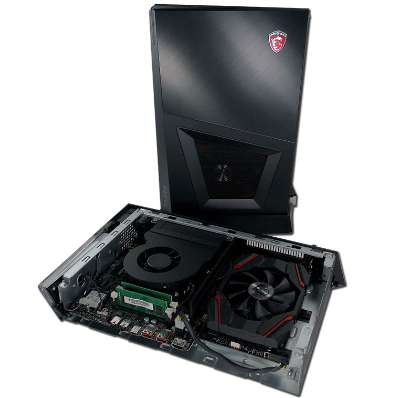
Performance and Upgradation of MSI Trident 3
Having a sick style is impressive, but what stands out is how MSI has managed the internal layout of the MSI Trident 3. Despite its compact size, it houses a full-fledged desktop processor and graphics card.
Moreover, the straightforward layout of the MSI Trident 3 makes it relatively easy to upgrade most components, including the GPU, memory, and storage drives everything except the processor.
However, there’s one drawback: the power supply is essentially a bulky brick similar to those found in MSI’s gaming laptops. This compromise is an inconvenience inherent to mini-desktops like the MSI Trident 3 and the Acer Predator G1. Additionally, the non-upgradable 330W capacity PSU makes overclocking challenging, requiring careful consideration of the power consumption of any components you wish to upgrade.
Whether these concerns are significant to the console gaming audience targeted by this gaming PC depends on the individual user. For most MSI Trident 3 users, a system that performs well out of the box and can handle games at high-to-ultra settings will likely suffice.
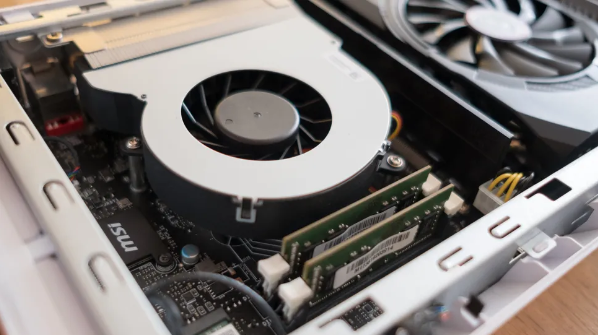
Even though it doesn’t have the GTX 1080 from NVIDIA, which you can find in rivals like Alienware and Lenovo Legion Tower 7i, this computer almost reaches its level of performance. Despite its small size, this gaming desktop provides seamless gameplay in games like Asphalt and Call of Duty, even when set to Ultra-quality graphics. What’s remarkable is that the MSI Trident 3 manages to achieve similar outcomes as the bigger and similarly equipped MSI Aegis 3.
What’s even more remarkable is how quiet and cool the MSI Trident 3 remains under heavy load. The fan noise is barely noticeable, even when sitting close to the PC. Users can confidently integrate this silent gaming PC into their home entertainment setup without worrying about disrupting their gaming or movie audio with unwanted noise.
Read Also: Review of MSI MAG B550 TOMAHAWK Motherboard
MSI Interceptor DS B1 GAMING Mouse
Here we have the MSI Interceptor DS B1 Gaming Mouse. It features an ambidextrous design, with forward and back buttons positioned on the left side, primarily catering to right-handed users. The bottom is almost entirely flat, equipped with large glide feet at each of the four corners.
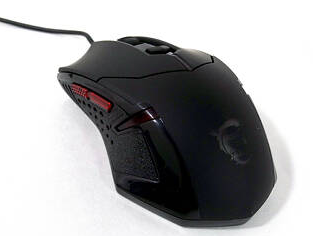
The top surface is textured with a silicone-like material, providing a comfortable feel against your hand. Your fingertips and thumbs may encounter a different texture, featuring perforations to promote airflow and keep your hands dry. The scroll wheel is coated with the same material as the top surface and features large bumps to facilitate rapid scrolling.
The MSI Interceptor DS B1 Gaming Mouse is weighted towards the rear, featuring a set of removable weights that you can adjust to your preference. I have large hands and prefer a heavier mouse, so I didn’t make any changes. Additionally, this mouse comes with LEDs, illuminating buttons, crevices, and the MSI dragon logo, along with the side buttons and some accent panels on the side.
MSI KB DS4200 GAMING Keyboard
Presenting the Gaming Keyboard by MSI. This keyboard is a beast and has convex switches. The lowermost is flat and includes feet, offering dual positions for adjusting the angle of the keyboard. I selected not to extend the feet.
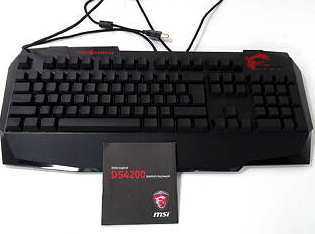
The body is straightforward, with a dragon brand symbol positioned above lights and a feel of palm support to keep your palms cool. I’m not just repeating MSI’s marketing: this is genuinely how using the keyboard felt for me.
For an entry-level gaming keyboard, the MSI KB DS4200 Gaming Keyboard is quite suitable. Although it lacks mechanical switches, which are favored by many users, the action provided by these switches is decent enough for my daily use over several weeks. The keyboard features LEDs that backlight the keys, with adjustable brightness but fixed colors. I wasn’t too fond of this setup. The colors span across the keys like a rainbow, with green on the left, red in the middle, and blue on the right, along with varying shades in between.
Teardown of MSI Trident 3
While the exterior appearance is important, what’s inside the Trident 3 by MSI is perhaps even more crucial.

Accessing the interior of the MSI Trident 3 is surprisingly straightforward. It begins by gently prying open one end, a task easily accomplished with your bare hands no tools required. The panel pops off effortlessly and can be reattached just as easily. Creating a piece that can be removed and reattached with such ease, yet remains securely in place, is quite an engineering feat. MSI could have opted for screws for simplicity, but they chose a more elegant solution.
Inside the slots where the removed panel was situated, you’ll find four screws that need to be loosened two to open the top and two for the bottom. Once all four screws are removed, you can slide off the top.
Removing the bottom section requires the loosening of three additional screws, one of which is concealed within a hole in the board. Additionally, there are two screws securing the front panel to the main chassis one at each end. With these screws removed, you can then slide off the bottom section.
You’ll also need to disconnect one cable from the front LED cable. However, detaching the rest of the front panel poses no issue. With a total of seven screws removed, you gain complete access to the interior components. Even with the panel removed, the PC remains fully functional; only the front panel and top appear detached. This design is elegant and how it grants access to the internal components housed within the MSI Trident 3.
Inner Components of MSI Trident 3
With both panels removed, you have convenient and unobstructed access to all the components inside the MSI Trident 3 desktop. However, from the top, you’ll notice the absence of drives. Flip the unit over, and you’ll find the drives located there.
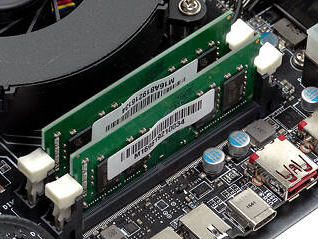
On the board itself, I discovered the chipset cooler, a small piece of metal. The CPU cooler is a blower type, which draws air from inside the unit and expels it out the back.
Here, you’ll find 2 small outline dual inline memory module slots, both occupied by 2 DIMM RAM of 8 GB in the PC. On one side, there’s the custom MSI GAMING GTX 1060 6 GB VGA, occupying its own designated area.
The GPU of GTX 1060 by MSI which is personalized receives power through a single 6-pin connection, which is plugged into the mainboard. For Wi-Fi connectivity, there’s an Intel Dual Band Wireless-AC 3168 card.
Examining the bottom once more, we can observe the installed drives. The 2.5″ drive sits in a tray with anti-vibration pads, offering stability and reducing noise. As for the SATA M.2 SSD, it simply plugs right in. In my unit, there’s a Kingston SSD with a capacity of 256 GB.
The mechanical drive is a Hitachi unit, with a storage capacity of 1 TB and a platter speed of 7200 RPM.
Testing of CPU-Z, Voltages, and Temperatures
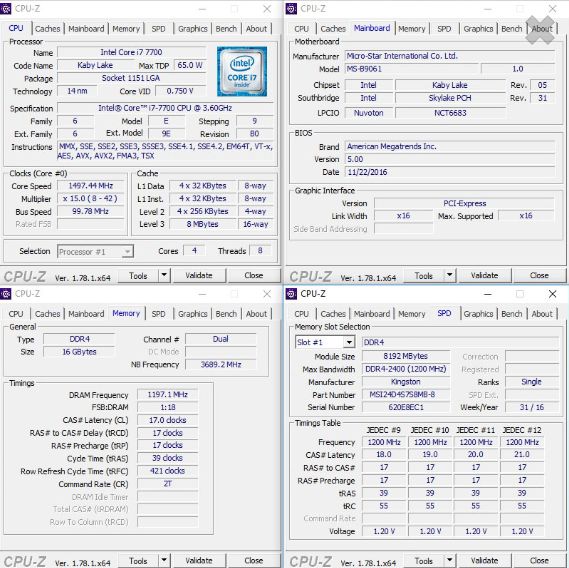
MSI has made the most of the CPU setup in the configuration I have. The Intel Center i7-7700 CPU could be a 65W demonstration, advertising 4 centers and 8 strings, with a base speed of 3600 MHz and a boost clock of up to 4200 MHz for single-core loads. Additionally, there’s 16 GB of 2400 MHz DDR4 memory, with modest timings of 17-17-17-39. The Intel Core i7-7700 is the top-tier locked CPU for this generation, so it’s hard to beat. It utilizes a standard Turbo profile, as overclocking is not supported on the MSI Trident 3 Gaming PC.
Read Also: Review of MSI Sword 15 Gaming Laptop – Affordable & Powerful Gaming Laptop
Power and Temperatures
After a few hours of playing DICE’s latest Battlefield 1, I took the following measurements. This game is one of the most recent “AAA” titles on the market, so it puts a significant strain on any system. I have the MSI Trident 3 connected to my aging Dell 3008WFP monitor via DisplayPort, running at 2560×1600 resolution. Furthermore, I’m utilizing my Sennheiser PC 350 SE headset for TeamSpeak/Discord, so these measurements reflect a genuine online multiplayer gaming situation. The PC features the MSI GAMING GTX 1060 6 GB graphics card, along with a single M.2 SSD and a 1 TB mechanical drive. It also features 2400 MHz RAM of 16 GB.

Software of MSI Trident 3
MSI doesn’t bundle a plethora of software with the MSI Trident 3, but nowadays, not much is necessary or desired. You’ll find an app that prompts you to register your new device with MSI for warranty purposes, along with a trial version of Norton (which I promptly removed).
Next, there’s the Gaming Center software, which consolidates various functions that would typically be spread across multiple applications. Additionally, there’s a backup utility included, allowing you to create an image of your OS drive for quick recovery.
Availability and Price of MSI Trident 3
The MSI Trident 3, in the configuration you see above, costs $1,599. This specific unit MSI sent us may be a limited-edition Cold version of the MSI Trident 3, highlighting extraordinary white paintwork and Nvidia GTX 1070 elite to this demonstration.
In 2018, however, you’ll discover that the i7-7700 version has been replaced with an i7-8700, and it has received a $100 price cut, bringing it down to $1,499.
Customers have the choice to select the standard black edition of the MSI Trident 3, which includes identical processors and specifications. However, it only offers Nvidia GTX 1060 graphics and is priced at $1,099.
However, it remains significantly more affordable than comparable compact gaming PCs available in the market. For instance, the similar Corsair One model starts at $1,799 with nearly identical specs, except for a 16GB smaller SSD and a liquid-cooling solution for the processor.
Conclusion
I’ve spent several weeks using the MSI Trident 3 Gaming PC daily, and I must admit, I might be a bit spoiled by all the other hardware I have at my disposal. Since the MSI Aegis TI is now my primary daily PC, the modestly equipped MSI Trident 3 initially seemed underpowered for my needs. However, upon plugging in the Trident, I was pleasantly surprised.
This PC excels in delivering excellent gaming performance for high-resolution gaming. The built-in GTX 1060 6 GB VGA for Gaming is more than capable of running modern games smoothly at decent frame rates, with most, if not all, details set to the maximum, all while using minimal power. Furthermore, it takes up very little space on your desk or in your living room. I’ve placed mine alongside my 55-inch 1080p TV for gaming with a controller, and thanks to Windows 10’s user-friendly interface tailored for such use cases, combined with the highly capable hardware in this configuration, I’ve found the MSI Trident 3 Gaming PC to be an excellent option for STEAM Big Picture gaming.
In the tested configuration, you might find the MSI Trident 3 Gaming PC a bit lacking in storage space if you’re someone who stores a lot of data on your PC. However, if you’re not a heavy installer, the provided 256 GB SSD for the OS and the additional 1 TB mechanical drive should suffice. After all, this isn’t a full-blown overclocking PC. I’d prefer 32 GB of RAM instead of 16 GB, but 16 GB is certainly adequate.
With plenty of USB ports on the rear, you can easily add additional external storage at any time if needed. Alternatively, you can take advantage of the easy access to the MSI Trident 3’s internals and upgrade the drive space in the future. With fast internet readily available in most regions and affordable cloud storage options, physical storage capacity may not be a major concern for many users.
I understand that the LED on the Trident 3 Gaming PC might deter some users, but I find the aesthetic sleek black design with minimal branding fantastic. Additionally, you can turn off or unplug the LED if it bothers you. Since it’s not overly bright, it shouldn’t be a significant issue if you plan to use it as part of your home theater setup, where external lighting can be problematic. This system isn’t designed to break records, but it also won’t break the bank. Plus, did I mention it’s almost perfectly silent? While it may produce a bit of noise when pushed hard, it’s truly minimal, as the only fans are on the CPU and VGA coolers. This means component temperatures may rise at times, but not to a concerning level. If you have any questions or thoughts I didn’t cover in this review, feel free to share them in the forums!

